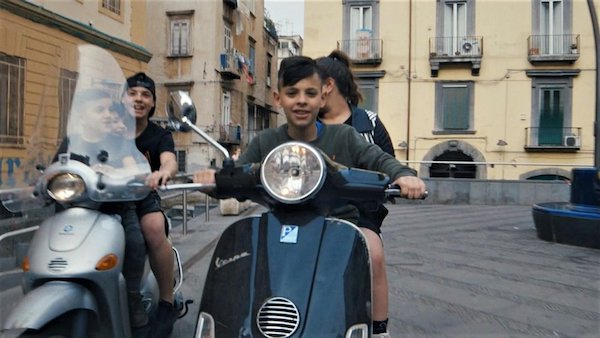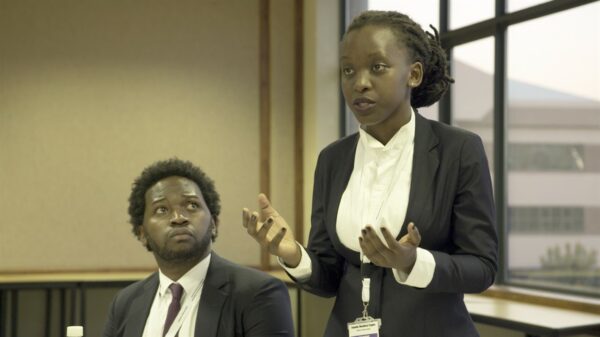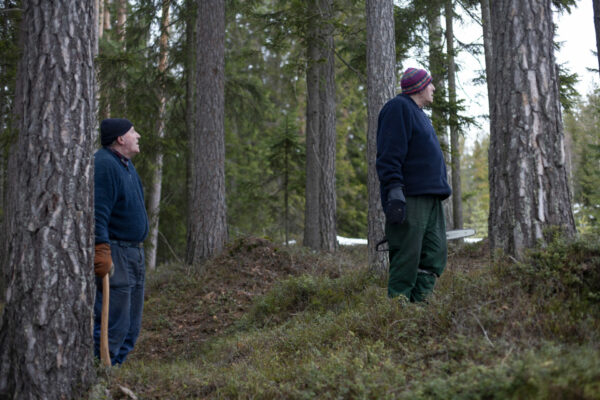Doc Talk: Five International Cinematic Treks
By Peter Keough
The world is yours at the Global Cinema Film Festival of Boston
On three continents, on the sea, in the air, in cities, and in a forest, these five films at the Global Cinema Film Festival of Boston (available online through May 21) show us real people confronting challenges and overcoming tragedy in places we have forgotten about or never knew.

A scene from Roman Liubyi’s Iron Butterflies.
Iron Butterflies (2022)
The fate of Malaysia Airlines Flight 17 be overshadowed by the overwhelming litany of Russian atrocities that have shocked the world following its invasion of Ukraine in February 2022. But it has haunted Ukrainian filmmaker Roman Liubyi since it was shot down over insurgent-held Donbas on July 17, 2014, killing all 298 men, women, and children on board.
The title of his film comes from the distinctive shape of the hundreds of shrapnel fragments that had perforated the cockpit and the crew members inside, one of the many macabre bits of evidence that Liubyi pores over in this collage-like, multi-format investigation. He combines old Soviet instructional videos about the BUK missile system that took down the plane with contemporary Russian news broadcasts spreading disinformation regarding what happened. These reports deny all responsibility: some blame the Ukrainians instead, some offer absurd explanations, including one from a psychic. It’s a preview of the grotesqueries the official Russian media have disseminated since the invasion. This nonsense is mutely countered by footage of the crash site with its images of shattered children’s toys and gloating Russian-allied separatist troops posing by the wreckage.
At the heart of the story are the proceedings of the Joint Investigation Team held by the Netherlands and Australia, countries that lost many citizens in the crash, and which found Russia solely to blame. Less successful is the film’s inclusion of artful, monochrome reenactments, some eloquent and others banal, that inadvertently tend to trivialize the gravity of the subject. Not so the images shown near the end of refugees fleeing the Russian onslaught against Kiev, a reminder that this tragic incident and its warning of Russian barbarity went unheeded.

A scene from Gregoris Rentis’ Dogwatch. Courtesy of Visions du Reel
Dogwatch (2022)
Remember the Somali pirates, who terrorized the shipping lanes off the Horn of Africa and were featured in Paul Greengrass’s outstanding 2013 film Captain Phillips? We don’t hear much about them these days, largely thanks to the armed guards who are protecting the huge cargo ships they preyed on. It’s a tough job, not because of the danger, but the tedium, as is seen in the sometimes absurdist and surreal images shot by Greek filmmaker Gregoris Rentis in this austere and poetic documentary.
Rentis focuses on three of the brawny, heavily tattooed guards, each of varying ages and degrees of experience. They include young Yorgos, a newbie now in training in Sri Lanka and awaiting assignment. When off duty he wanders the streets in search of nightlife like some outtake from Claire Denis’s Beau Travail (1999). Costa is older, a veteran who plays phone tag with his Australian girlfriend in between drill exercises with members of the ship’s bemused crew. The latter, very much bored themselves, cheerfully perform as hostages in rescue scenarios despite the numerous retakes.
Costa is starting to find the monotony a little wearying. He muses about moving on, as does grizzled Victor (the director’s uncle), who has taken time off to stay for a few months with his wife and young son in Athens. The latter wears his hair shoulder length, unlike his father and his close-cropped colleagues. Still, he’s a chip off the old block otherwise as his mother, pretty gung-ho herself, spars with him; she teaches him how to throw a punch the same way dad does. Rentis’s portraits of these idle and lethal mercenaries is sympathetic and sometimes whimsical but doesn’t lose sight of the underlying threat they defend against — and which, perhaps, they represent.

A scene from Victoria Fiore’s Hide and Seek.
Hide and Seek (2022)
In a scene in Victoria Fiore’s portrait of a troubled Neapolitan family, a young tough talks about how he auditioned for a part in Gomorrah (2014-21) the Italian TV series spun off from Matteo Garrone’s explosive exposé about the city’s organized crime syndicate. Mob activity has tapered down these days but it still has an impact on the inhabitants of the run-down, tight-knit neighborhood the “Spanish Quarter.” So too, perhaps more so, do the sometimes misdirected efforts to combat the criminal element, preventive policies to isolate and reform children who might pose a threat.
Seen at the start of the film with a gang of fellow “scugnizzi” (street kids) as they gather discarded Christmas trees for a ritualistic bonfire, Entoni is considered a child at risk because of his family’s mafia connections. His father is in jail and his grandmother, whose mob ties are mysterious, broods about his fate as she remembers her own tough times and deals out her deck of prophetic “angel cards.”
Fiore follows Entoni’s story over a couple of years, as he messes around with his best pal until the two, after setting fire to a car, become entangled in tougher enforcement policies. Driven away in a police car for the first of many detentions, the forlorn Entoni recalls Antoine Doinel in The 400 Blows (1959).
His mother is at a loss how to deal with him — her beefy boyfriend mutters “just beat him” when he acts up. His younger brother worships him and is clearly heading on the same path. In a touching, wordless scene Entoni waves a handkerchief at his father who looks on far away from a prison window. Later, his mother and brother do the same — at the institution where Entoni is being held.

A scene from Shameela Seedat’s African Moot.
African Moot (2022)
One of the participants in the African Human Rights Moot Competition, the subject of Shameela Seedat’s engrossing and complex film, confesses that the topic of refugee rights, the issue to be debated in their mock courtroom contest, has jaded some people. But the problem still motivates the four teams of student litigators from different African countries participating in the annual event, and not just because the hopes of their universities are riding on their performances – not to mention the prospects for their careers. It’s because they are deeply passionate about the cause.
Which makes things complicated because the rules require them to argue both sides of a hypothetical case – this year it’s that of a LGBTQI activist being denied asylum from his native country by a neighboring nation. Edward, a member of the South African team, finds taking the opposite side especially difficult – he is himself gay and his mother had been a refugee from Uganda during the reign of Idi Amin. He fumbles through his counterargument and is later dismayed during a symposium when an older professor presents homophobic views – and is applauded. Edward is shattered that this should happen at an event promoting human rights.
But the others are undaunted, even when they don’t win. They bounce back and pursue their dedication to defending justice. As one participant reflects, there is a whole new generation of African youth who have never known colonialism, are well educated, and are willing and able to change the world.

A scene from Øyvind Elvsborg’s Forest Brothers.
Forest Brothers (2022)
Like Joe Berlinger and Bruce Sinofsky’s Brother’s Keeper (1992) but without its squalor or murder mystery, Øyvind Elvsborg’s elegiacal and sublime film focuses on siblings isolated in a remote rural setting. The septuagenarian twin brothers Olaf and Sven have lived their whole lives on a farm in a luminously beautiful but isolated forest by the Tyrifjorden in Norway. They never married, have no children, and evidently don’t have many friends. But they kept themselves busy — doing chores, chopping down trees, selling the lumber, and participating in the local sporting competitions. But Sven has taken ill of late and when Olaf visits him in the hospital he’s not looking good. So it comes as no surprise when he dies.
Olaf tries to move on from his grief but it’s hard. He’s alone except for the new neighbors about whom he bemusedly speculates about while gazing at their tired-looking old horse and listening to their mysterious drumming. When he takes part in one of the community events called “orienteering” he finds it hard to keep up. No one seems interested when he mentions that his brother died, but they do give him a trophy.
In a heartbreaking scene Olaf laments how the cat that used to visit him doesn’t show up anymore. Later, when he himself is laid up in a rest home, he recalls how he and his brother once shot a fox, wounded it, and saw its blood tracks in the snow. Years later he can’t forget this or forgive himself for causing the animal such pain. He never hunted again.
Elvsborg dedicates his film to Olaf and Sven. Without it we would not know about these great souls.
Peter Keough writes about film and other topics and has contributed to numerous publications. He had been the film editor of the Boston Phoenix from 1989 to its demise in 2013 and has edited three books on film, most recently For Kids of All Ages: The National Society of Film Critics on Children’s Movies (Rowman & Littlefield, 2019).
Tagged: African Moot, Dogwatch, Forest Brothers, Global Cinema Film Festival of Boston, Gregoris Rentis, , Iron Butterflies, Øyvind Elvsborg, Roman Liubyi, Shameela Seedat

